Technology symbiosis - ALM (3D Print) and simulation driven design at the 6th EATC in Turin
22nd May 2013
Source:
Altair Engineering
Altair organized a technical session and a round table discussion on the topic “Technology Symbiosis Topology Optimization and ALM (Additive Layer Manufacturing)”, also known as 3D printing, on April 23rd in Turin as part of the European Altair Technology Conference.
In the technical session a representative of the Airbus Endowed Professorship, engineers from EADS, a representative from EOS, researchers of the RWTH Aachen, and members of the ILT Fraunhofer and the TU Hamburg Harburg presented their work in the area of additive manufacturing. The session was moderated by Dr. Ming Zhou, Vice President FE Solvers and Optimization, Altair.
After the technical session, a round table discussion, moderated by Ming Zhou and James Dagg, Senior Vice President of Software Development, solidThinking, addressed how to leverage the full potential of resource-friendly component design by applying simulation driven design methods. In addition, the discussion also addressed the commercial aspects of ALM as well as further research and development needs in this area. All experts agreed on topology optimization offering the best way to unlock the light weight potential related to this manufacturing method.
The participants identified the key challenges of ALM and the related technologies, including:
• The majority of designers and construction engineers are still thinking in classic manufacturing pattern since they are not used to ALM realization which requires a fundamental rethinking in the development process. Despite the enormous design freedom, ALM has its own manufacturing boundaries to be considered in the component design. One of them being that in 3D printing, overhanging structures or so called support structures are needed, which have to be removed in a later manufacturing step.
• A better knowledge of material properties used within ALM is required to ensure an efficient design of the components.
• Currently there are many different ALM technologies in the market – one type of 3D printing is not the same as another 3D printing method. For every process it is important to understand its details and to know the process parameters to simulate and predict the component’s behavior.
• Currently there is no official process qualification in place, which means, that especially mission critical components require an enormous validation effort to prove component safety for a final certification.
However, the benefits of the symbiosis between topology optimization and ALM are obvious. Topology optimization offers the best way to create application and load specific structures and enables the industry to unlock the enormous lightweight design potential related to use of ALM structures. ALM constraints can be used as manufacturing boundary conditions in OptiStruct have been shown and discussed to reduce further manufacturing treatments and to minimize material usage. Besides design and structural definition, material validation and especially a certification of the processes and the components are challenges to overcome before the parts can be used for example in primary structures of aircrafts. In this context the detailed understanding of the manufacturing process and the ability to simulate it plays an important role.
Despite the barriers and challenges it is worthwhile to use topology optimization for ALM components since the weight saving potential is enormous. By combining the two methods, a weight saving of up to 60 % can be achieved, compared to traditionally manufactured parts and the ongoing development of both the simulation and the manufacturing method promises cost savings with this so far relatively cost intensive production method.
“The meeting with the developers of the manufacturing and software technology, product developers, and researchers was a fruitful exchange between experts, which improved the understanding of the upcoming challenges and tasks,” said Mirko Bromberger, Marketing Principal, Altair. “All participants of the subsequent round table agreed on both technologies representing a symbiotic link and identified that topology optimization should become the standard process in the design of ALM components.”
“Seeing all these results, it is clear that Topology Optimization is the best way to unlock the lightweight potential that is brought by these new manufacturing technologies,” said Wolfgang Machunze, EADS. “Although we have seen that the process from structure identification to structure realization still requires some further efforts, the symbiotic combination of these technologies is evident.
The presentations of the ALM session from technology developers, users, and research institutes will soon be available on the event’s website and will include the following papers:
• Martin Muir, EADS
Multidisciplinary Optimisation of Business Jet MED Hinge for Production by Additive Manufacturing
• Wolfgang Machunze, EADS
Topology Design of a Metallic Load Introduction Bracket Manufactured by ALM
• Vito Chinellato, EOS
Sustainability Approach by Design Optimization for Advanced Layer Manufacturing
• Simon Merkt, RWTH Aachen/ILT Fraunhofer
Digital Photonic Production - Optimization Potentials by Laser Based Manufacturing
• Jannis Kranz, TUHH
Structural Optimization and Laser Additive Manufacturing in Lightweight Design: Barriers and Chances
• Nils Keller on behalf of Prof. Dr.-Ing. Vasily Ploshikhin, Airbus Endowed Professorship for an integrated simulation and engineering approach of materials and processes
Multi-Scale FEM Simulation of Selective Laser Melting Process
For more than 20 years, Altair has developed OptiStruct, a tool with which completely new shapes can be discovered by leveraging topology optimization. This technology inspires lightweight design and significantly contributes to saving thousands of tons of material usage and as a result contributes to reduced CO2 emissions. The software solidThinking Inspire makes this technology available also for designers and design engineers, which means that optimization is not exclusively reserved for experts and can be leveraged already in the design phase of a component.
After the technical session, a round table discussion, moderated by Ming Zhou and James Dagg, Senior Vice President of Software Development, solidThinking, addressed how to leverage the full potential of resource-friendly component design by applying simulation driven design methods. In addition, the discussion also addressed the commercial aspects of ALM as well as further research and development needs in this area. All experts agreed on topology optimization offering the best way to unlock the light weight potential related to this manufacturing method.
The participants identified the key challenges of ALM and the related technologies, including:
• The majority of designers and construction engineers are still thinking in classic manufacturing pattern since they are not used to ALM realization which requires a fundamental rethinking in the development process. Despite the enormous design freedom, ALM has its own manufacturing boundaries to be considered in the component design. One of them being that in 3D printing, overhanging structures or so called support structures are needed, which have to be removed in a later manufacturing step.
• A better knowledge of material properties used within ALM is required to ensure an efficient design of the components.
• Currently there are many different ALM technologies in the market – one type of 3D printing is not the same as another 3D printing method. For every process it is important to understand its details and to know the process parameters to simulate and predict the component’s behavior.
• Currently there is no official process qualification in place, which means, that especially mission critical components require an enormous validation effort to prove component safety for a final certification.
However, the benefits of the symbiosis between topology optimization and ALM are obvious. Topology optimization offers the best way to create application and load specific structures and enables the industry to unlock the enormous lightweight design potential related to use of ALM structures. ALM constraints can be used as manufacturing boundary conditions in OptiStruct have been shown and discussed to reduce further manufacturing treatments and to minimize material usage. Besides design and structural definition, material validation and especially a certification of the processes and the components are challenges to overcome before the parts can be used for example in primary structures of aircrafts. In this context the detailed understanding of the manufacturing process and the ability to simulate it plays an important role.
Despite the barriers and challenges it is worthwhile to use topology optimization for ALM components since the weight saving potential is enormous. By combining the two methods, a weight saving of up to 60 % can be achieved, compared to traditionally manufactured parts and the ongoing development of both the simulation and the manufacturing method promises cost savings with this so far relatively cost intensive production method.
“The meeting with the developers of the manufacturing and software technology, product developers, and researchers was a fruitful exchange between experts, which improved the understanding of the upcoming challenges and tasks,” said Mirko Bromberger, Marketing Principal, Altair. “All participants of the subsequent round table agreed on both technologies representing a symbiotic link and identified that topology optimization should become the standard process in the design of ALM components.”
“Seeing all these results, it is clear that Topology Optimization is the best way to unlock the lightweight potential that is brought by these new manufacturing technologies,” said Wolfgang Machunze, EADS. “Although we have seen that the process from structure identification to structure realization still requires some further efforts, the symbiotic combination of these technologies is evident.
The presentations of the ALM session from technology developers, users, and research institutes will soon be available on the event’s website and will include the following papers:
• Martin Muir, EADS
Multidisciplinary Optimisation of Business Jet MED Hinge for Production by Additive Manufacturing
• Wolfgang Machunze, EADS
Topology Design of a Metallic Load Introduction Bracket Manufactured by ALM
• Vito Chinellato, EOS
Sustainability Approach by Design Optimization for Advanced Layer Manufacturing
• Simon Merkt, RWTH Aachen/ILT Fraunhofer
Digital Photonic Production - Optimization Potentials by Laser Based Manufacturing
• Jannis Kranz, TUHH
Structural Optimization and Laser Additive Manufacturing in Lightweight Design: Barriers and Chances
• Nils Keller on behalf of Prof. Dr.-Ing. Vasily Ploshikhin, Airbus Endowed Professorship for an integrated simulation and engineering approach of materials and processes
Multi-Scale FEM Simulation of Selective Laser Melting Process
For more than 20 years, Altair has developed OptiStruct, a tool with which completely new shapes can be discovered by leveraging topology optimization. This technology inspires lightweight design and significantly contributes to saving thousands of tons of material usage and as a result contributes to reduced CO2 emissions. The software solidThinking Inspire makes this technology available also for designers and design engineers, which means that optimization is not exclusively reserved for experts and can be leveraged already in the design phase of a component.
Similar articles
More from Altair Engineering
- Altair Feko WinProp to be exhibited at EuCAP 2019 in Krakow 20th March 2019
- Design poised to transform product development 11th September 2018
- 2018 Global Altair Technology Conference keynotes announced 23rd July 2018
- Flow simulator software for engine system modelling 18th July 2018

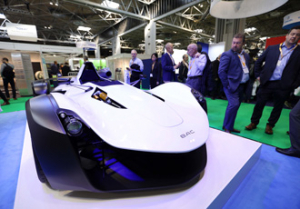
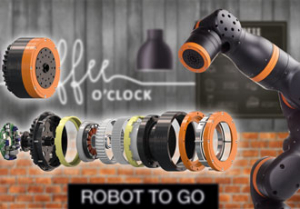
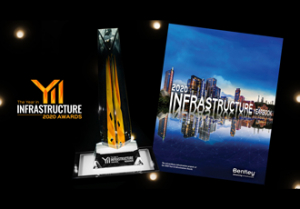
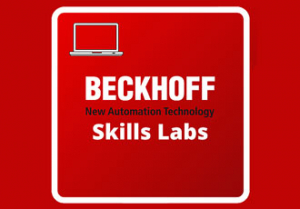
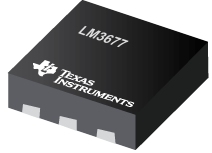

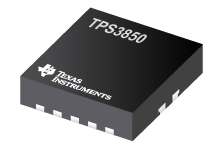
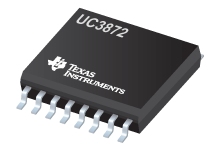

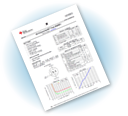

Write a comment
No comments